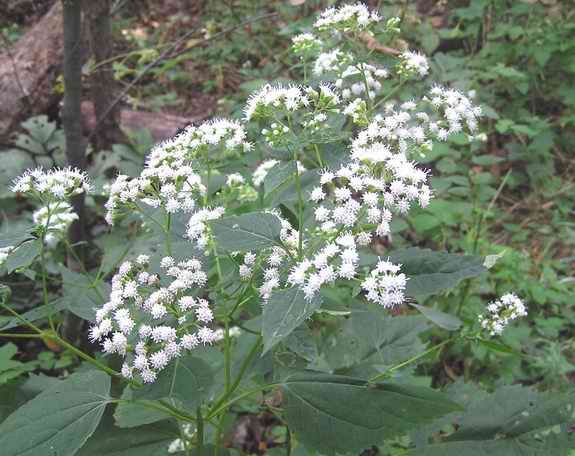|
Common Name: White Snakeroot (Attributed to its use in treating snakebite by Native Americans; also Indian Sanicle for its use as a medicinal, from sanus meaning healthy) Scientific Name: Eupatorium rugosum (The genus Eupatorium is from Mithridates Eupator [132-62 BCE], who was the governor of Pontus, an ancient kingdom on the Black Sea, or Pontus Euximus in Latin. King Eupator is accredited with discovering an antidote to the poison of a plant of this genus. Rugosum is Latin for wrinkled)
Potpourri: White Snakeroot is highly toxic to cattle, horses, goats, sheep and swine. The toxic component is tremetol, which accumulates in the system of the animal over time and has a cumulative effect, reaching toxicity at between 1 and 10 percent of body weight. The toxin passes into the milk of dairy cattle whence it can be transmitted to humans who drink the milk, succumbing to a condition called "milk sickness."
During the initial North American settlement period of the 17th and 18th Centuries, pioneers cleared land for a cabin, leaving open spaces where white snakeroot would proliferate. The cattle grazed on the plant in these areas, generating toxic milk. On October 5, 1818, two years after Thomas Lincoln moved his family, including Abraham, to southern Illinois, his wife Nancy Hanks Lincoln died of milk sickness.
The symptoms of tremetol poisoning include a stiff gait, trembling, sweating and labored breathing. It was also called the "slows and the trembles," often causing death in one day. The cause of was not attributed to the White Snakeroot plant until the 20th Century. |
